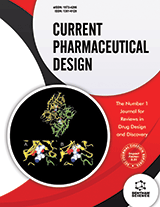Abstract
D-Amino acid oxidase (DAAO) catalyzes the oxidative metabolism of D-amino acids including D-serine, a full agonist at the allosteric glycine binding site of the NMDA receptor. D-serine was reported to improve negative and cognitive symptoms of schizophrenia, symptoms poorly addressed by the standard D2 antagonist therapies. Therefore, inhibition of DAAO has gained substantial interest as an effective way to increase D-serine levels in the brain. During the last several years, a growing number of structurally diverse DAAO inhibitors have been identified with significantly higher inhibitory potency compared to the conventional DAAO inhibitors. Some of these new generation of DAAO inhibitors are being evaluated for their ability to enhance D-serine levels in rodents and efficacy in animal models of schizophrenia. This article highlights the progress that has been made toward the discovery of DAAO inhibitors and recent efforts to exploit their therapeutic utility in schizophrenia.
Keywords: D-amino acid oxidase, D-serine, NMDA receptors, schizophrenia
Current Pharmaceutical Design
Title: Recent Advances in the Discovery of D-Amino Acid Oxidase Inhibitors and Their Therapeutic Utility in Schizophrenia
Volume: 17 Issue: 2
Author(s): Dana V. Ferraris and Takashi Tsukamoto
Affiliation:
Keywords: D-amino acid oxidase, D-serine, NMDA receptors, schizophrenia
Abstract: D-Amino acid oxidase (DAAO) catalyzes the oxidative metabolism of D-amino acids including D-serine, a full agonist at the allosteric glycine binding site of the NMDA receptor. D-serine was reported to improve negative and cognitive symptoms of schizophrenia, symptoms poorly addressed by the standard D2 antagonist therapies. Therefore, inhibition of DAAO has gained substantial interest as an effective way to increase D-serine levels in the brain. During the last several years, a growing number of structurally diverse DAAO inhibitors have been identified with significantly higher inhibitory potency compared to the conventional DAAO inhibitors. Some of these new generation of DAAO inhibitors are being evaluated for their ability to enhance D-serine levels in rodents and efficacy in animal models of schizophrenia. This article highlights the progress that has been made toward the discovery of DAAO inhibitors and recent efforts to exploit their therapeutic utility in schizophrenia.
Export Options
About this article
Cite this article as:
V. Ferraris Dana and Tsukamoto Takashi, Recent Advances in the Discovery of D-Amino Acid Oxidase Inhibitors and Their Therapeutic Utility in Schizophrenia, Current Pharmaceutical Design 2011; 17 (2) . https://dx.doi.org/10.2174/138161211795049633
| DOI https://dx.doi.org/10.2174/138161211795049633 |
Print ISSN 1381-6128 |
| Publisher Name Bentham Science Publisher |
Online ISSN 1873-4286 |
 29
29
- Author Guidelines
- Bentham Author Support Services (BASS)
- Graphical Abstracts
- Fabricating and Stating False Information
- Research Misconduct
- Post Publication Discussions and Corrections
- Publishing Ethics and Rectitude
- Increase Visibility of Your Article
- Archiving Policies
- Peer Review Workflow
- Order Your Article Before Print
- Promote Your Article
- Manuscript Transfer Facility
- Editorial Policies
- Allegations from Whistleblowers
- Announcements
Related Articles
-
Progressive Supranuclear Palsy: What Do We Know About it?
Current Medicinal Chemistry Treatment of Epileptic Encephalopathies
Current Pharmaceutical Design Good Epidemiologic Practice in Retinitis Pigmentosa: From Phenotyping to Biobanking
Current Genomics Optical Coherence Tomography Detection of Neurodegeneration in Multiple Sclerosis
CNS & Neurological Disorders - Drug Targets Variability in the Effects of Nicotine on Different Regions of the Brain: Changes in the Concentration of Superoxide Dismutase Isoforms
Central Nervous System Agents in Medicinal Chemistry Transient Focal Lesions in the Splenium of the Corpus Callosum with Restricted Diffusion: An Enigma
Current Medical Imaging Low Retention of [S-methyl-11C]MeS-IMPY to β-amyloid Plaques in Patients with Alzheimers Disease
Current Radiopharmaceuticals Aminopyridines and Acetyl-DL-leucine: New Therapies in Cerebellar Disorders
Current Neuropharmacology Possible Neuroprotective Strategies for Huntingtons Disease
Current Neuropharmacology Green Tea (Camellia sinensis) Protects Against Arsenic Neurotoxicity via Antioxidative Mechanism and Activation of Superoxide Dismutase Activity
Central Nervous System Agents in Medicinal Chemistry Drug-Resistance in Central Nervous System Tumors: From the Traditional Cell-Resistance Model to the Genetically Driven Approaches on Therapy
Current Pharmaceutical Biotechnology The Possible Involvement of NMDA Glutamate Receptor in the Etiopathogenesis of Bipolar Disorder
Current Pharmaceutical Design Oxysterol Derivatives of Cholesterol in Neurodegenerative Disorders
Current Medicinal Chemistry A Review on the Monoacylglycerol Lipase: At the Interface Between Fat and Endocannabinoid Signalling
Current Medicinal Chemistry Congenital Muscular Dystrophy 1D Causes Matrix Metalloproteinase Activation And Blood-Brain Barrier Impairment
Current Neurovascular Research α7 Nicotinic Acetylcholine Receptor as a Potential Therapeutic Target for Schizophrenia
Current Pharmaceutical Design Role of Complement Systems in IVIG Mediated Attenuation of Cognitive Deterioration in Alzheimer's Disease
Current Alzheimer Research Histone Deacetylase (HDAC) Inhibitors as Potential Drugs to Target Memory and Adult Hippocampal Neurogenesis
Current Psychopharmacology Corticotropin Releasing Factor (CRF) Peptide Family and their Receptors: Divergent Actions Influencing Human Physiology
Current Genomics Glycogen Synthase Kinase-3 in Neurodegeneration and Neuroprotection:Lessons from Lithium
Current Alzheimer Research


























